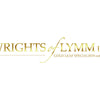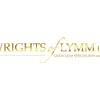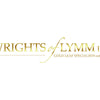Common Questions and Answers About Gold Leaf
- by Sam Wozniak
1. What is gold leaf used for?
Gold leaf is primarily used by Monumental Masons to create memorial pieces but is also commonly used in art, furniture, architecture, and restoration projects. It is applied to paintings, sculptures, picture frames, furniture, and even buildings for a luxurious gold finish.
2. Is all gold leaf real gold?
Not always. At Wrights of Lymm we have a variety of products ranging from genuine gold leaf to imitation leaf. Our genuine gold leaf ranges from 6ct to 24ct - the lower carats contain a higher percentage of silver which is what dictates the colour of the leaf. Imitation leaf (also called Dutch metal or composition gold) is made from brass, copper, or other alloys.
3. What is the difference between genuine gold leaf and imitation gold leaf?
- Genuine gold leaf is made from real gold (often mixed with small amounts of silver or copper). Gold leaf which is above 23.5 carat does not tarnish although lesser carats are more likely to tarnish with time.
- Imitation gold leaf is made from brass or other metals and can tarnish over time unless sealed properly.
4. What are the different types of gold leaf?
- Loose Leaf – Comes in thin, individual sheets that require careful handling.
- Transfer Leaf – Attached to a transfer paper for easier application on larger surfaces.
- Gold Leaf Rolls – Comes in rolls for gilding long, continuous surfaces.
5. How is gold leaf applied?
Gold leaf is applied using a process called gilding, which involves using an adhesive (gilding size) to attach the gold to a surface. A soft brush is used to smooth it out.
Take a look at our blog post for a guide on how to use gold leaf
6. Can gold leaf be used outdoors?
Yes, but only genuine gold leaf which is above 23.5ct should be used outdoors, as it does not tarnish or oxidize. Imitation gold leaf must be sealed with a protective coating to prevent tarnishing.
7. Does gold leaf tarnish?
- Real gold leaf (23.5ct and above) does not tarnish.
- Lower-karat gold leaf (below 23.5ct) or imitation gold leaf may tarnish over time if not sealed.
8. Can you use gold leaf on metal?
Yes! Gold leaf can be applied to metal surfaces using special adhesives and sealants. Proper preparation, including cleaning and priming, is important.
9. Is gold leaf waterproof?
Gold leaf itself is not waterproof, but when properly applied and sealed, it can be used on exterior surfaces exposed to weather.
10. Can gold leaf be polished?
Gold leaf is extremely thin and delicate, so it cannot be polished like solid gold. Instead, it should be carefully burnished (rubbed gently) with a soft tool like an agate burnisher.
11. What surfaces can gold leaf be applied to?
Gold leaf can be applied to wood, metal, glass, leather, ceramics, plastic, and even fabric, as long as the proper adhesive (known as size) is used.
12. How long does gold leaf last?
When applied correctly and sealed, genuine gold leaf can last for decades or even centuries, especially in protected environments like artwork and interior decor. Using a thicker leaf will give a longer lasting finish.
13. Why is gold leaf so thin?
Gold leaf is hammered into extremely thin sheets—as thin as 0.1 microns—so that it remains flexible and cost-effective while still maintaining the appearance of solid gold.
Take a look at this video showing our very own Clive Stonehouse, MD, hammering the gold leaf!
14. How do you protect gold leaf from damage?
Gold leaf can be sealed with varnish or clear lacquer if extra durability is needed, especially for high-contact or outdoor areas. This process can take away some of the lustre of the gold so is not always advised unless necessary.
15. Can you paint over gold leaf?
Yes, but it requires special primers and techniques to ensure adhesion. In many cases, artists use gold leaf as a decorative accent rather than painting over it.
16. Is gold leaf expensive?
Genuine gold leaf is relatively affordable compared to solid gold, but its price depends on carat purity, sheet size, and quantity. Imitation gold leaf is much cheaper.
17. Where is gold leaf commonly used in architecture?
Gold leaf is famously used in church domes, temples, palaces, statues, and historical buildings, such as the State Capitol domes in the U.S. and Buddhist temples in Thailand.
Take a look of some of the recent projects completed using Wrights of Lymm gold leaf
18. Can I make my own gold leaf?
No, making gold leaf requires specialized equipment and an ancient technique called gold beating, where gold is hammered into ultra-thin sheets.
19. How do I store gold leaf properly?
Store gold leaf in a cool, dry place, away from moisture and static electricity. Keep it in its original packaging to prevent damage. We advise our customers to purchase one these gold leaf tins to store large quantities of gold
20. What is the history of gold leaf?
Gold leaf has been used for over 5,000 years, dating back to Ancient Egypt, where it adorned tombs, statues, and jewellery. It was later used in Renaissance paintings, religious icons, and Asian temples.
21. Can gold leaf be removed?
Yes, but carefully. Depending on the adhesive used, gold leaf can be removed with gilding solvents, sanding, or chemical removers.
22. Can gold leaf be used on fabric?
Yes, but it requires a special textile adhesive. Gold leaf on fabric is often seen in high-fashion designs and artistic projects.
23. What is burnishing in gold leaf application?
Burnishing is a technique where the gold leaf is gently polished with an agate stone or soft cloth to enhance its shine and adhesion. See our extensive range of Agate Burnishers here
24. What is the difference between water gilding and oil gilding?
- Water Gilding – A traditional, complex method using a water-based adhesive, giving a highly reflective finish.
- Oil Gilding – Uses an oil-based adhesive (size), making it more durable and easier for beginners.
25. Can gold leaf be used in furniture restoration?
Yes! Gold leaf is commonly used to restore antique frames, chairs, tables, and mirrors, adding a classic, regal touch.
26. Why does my gold leaf look dull?
Gold leaf can appear dull if it’s not properly burnished or if it’s low carat or imitation gold, which may tarnish.
27. What is a gold leaf book?
A gold leaf book is a pack of individual gold sheets, typically containing 25 sheets stacked in tissue paper.
28. Can I mix gold leaf with paint?
No, gold leaf does not dissolve or mix with paint. However, gold leaf can be applied on top of dried paint for a decorative effect.
29. Does gold leaf fade over time?
Pure gold leaf (24ct) does not fade, but lower carat and imitation gold leaf may change colour if exposed to air and humidity.
30. Can gold leaf be layered?
Yes! You can apply multiple layers of gold leaf to create a thicker, richer gold appearance.
31. Can I use Mod Podge for gold leaf?
Yes, Mod Podge can work as a basic adhesive for gold leaf on crafts, but professional gilding adhesives provide much better results.
32. What is the best way to clean gold leaf?
Use a soft, dry brush to dust off gold leaf. Avoid water, as it can damage unsealed gold leaf.
33. Can gold leaf be electroplated?
No, electroplating involves a chemical process, while gold leaf is applied manually through gilding.
34. Can gold leaf be used for jewellery?
Gold leaf is too delicate for direct wear but can be encased in resin or glass for jewellery making.
35. Can I use gold leaf on candles?
Yes! Gold leaf can be applied to candles for decorative effects, but avoid burning it, as the adhesive might not be safe for inhalation.
36. Is gold leaf fireproof?
Yes, real gold leaf is heat-resistant, but it can be destroyed if burned at extremely high temperatures.
37. What is Verre Églomisé?
It is the technique of applying gold leaf on the back of glass to create a mirror-like, reflective effect.
38. Can gold leaf be used on pottery?
Yes, gold leaf can be applied to ceramic and pottery using the right adhesive, but it should not be used in areas that will come into contact with food.
39. How do I prevent gold leaf from wrinkling?
Ensure the surface is smooth and apply the leaf carefully with a soft brush or transfer sheet.
40. Can I mix different types of metal leaf?
Yes! Gold, silver, and copper leaf can be combined to create unique metallic effects.”
Do you still have questions? Take a look at our frequently asked questions or contact us via email or phone to speak to a member of our team who can help





